
Nine trees had grown for several years in one growing pot and I added two small single plumeria trees at the back for eleven trees total.



I unpot and bare root the eleven trees, letting them rest in a tub of water so I don't need to rush for the forest building.

I am going to plant two medium sized pairs of trees as twin trees, so I will bind them together beforehand.
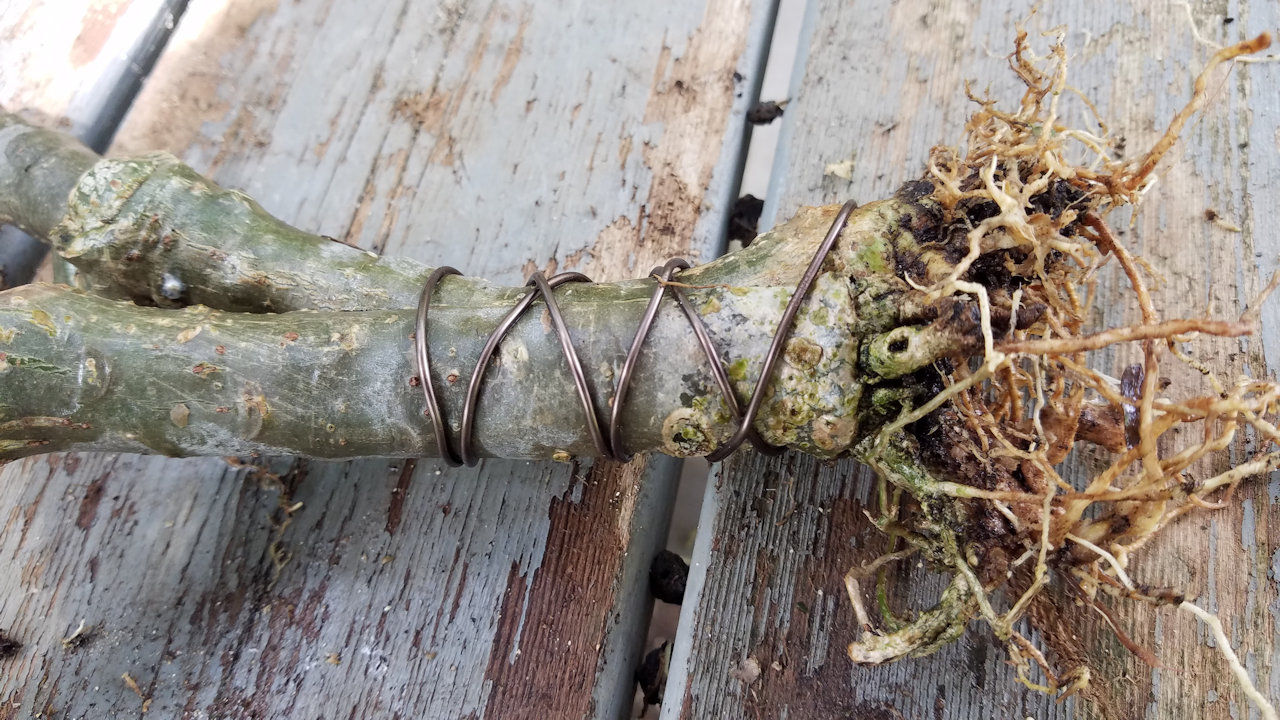
I used a saw to make flat spots on one pair of the trees, then I bound them together with bonsai wire. The other pair are simply bound without
flatspotting.
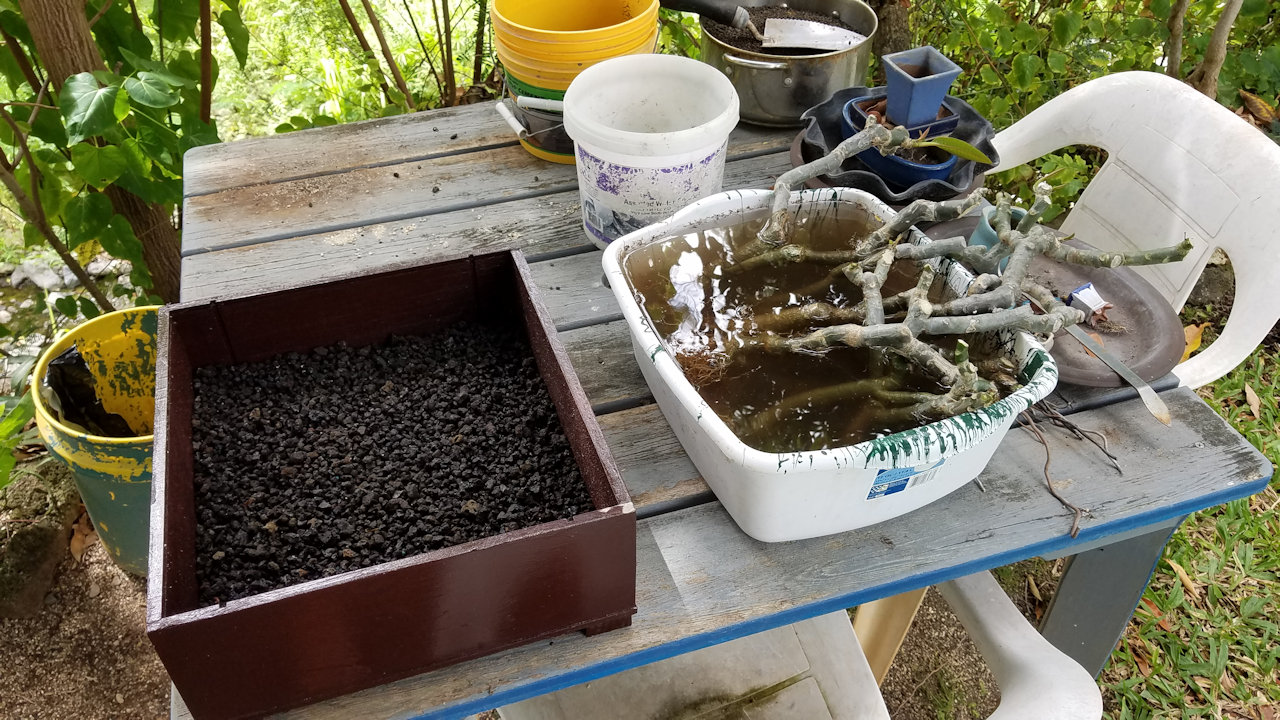
I have a painted growing box and I filled it one third up with quarter inch screened black volcanic cinders.

Then I added potting soil over the cinders and smoothed it level just below the top of the box.

As a general rule when building a forest, the largest trees are placed first, so I took the largest tree and put it toward the back and side of
the box. Some people like to put the larger trees in front in an attempt to achieve a forced perspective, but I think a forest looks more inviting
with the larger trees in the back drawing you in. I put wet sand over the roots to help hold the tree in position.
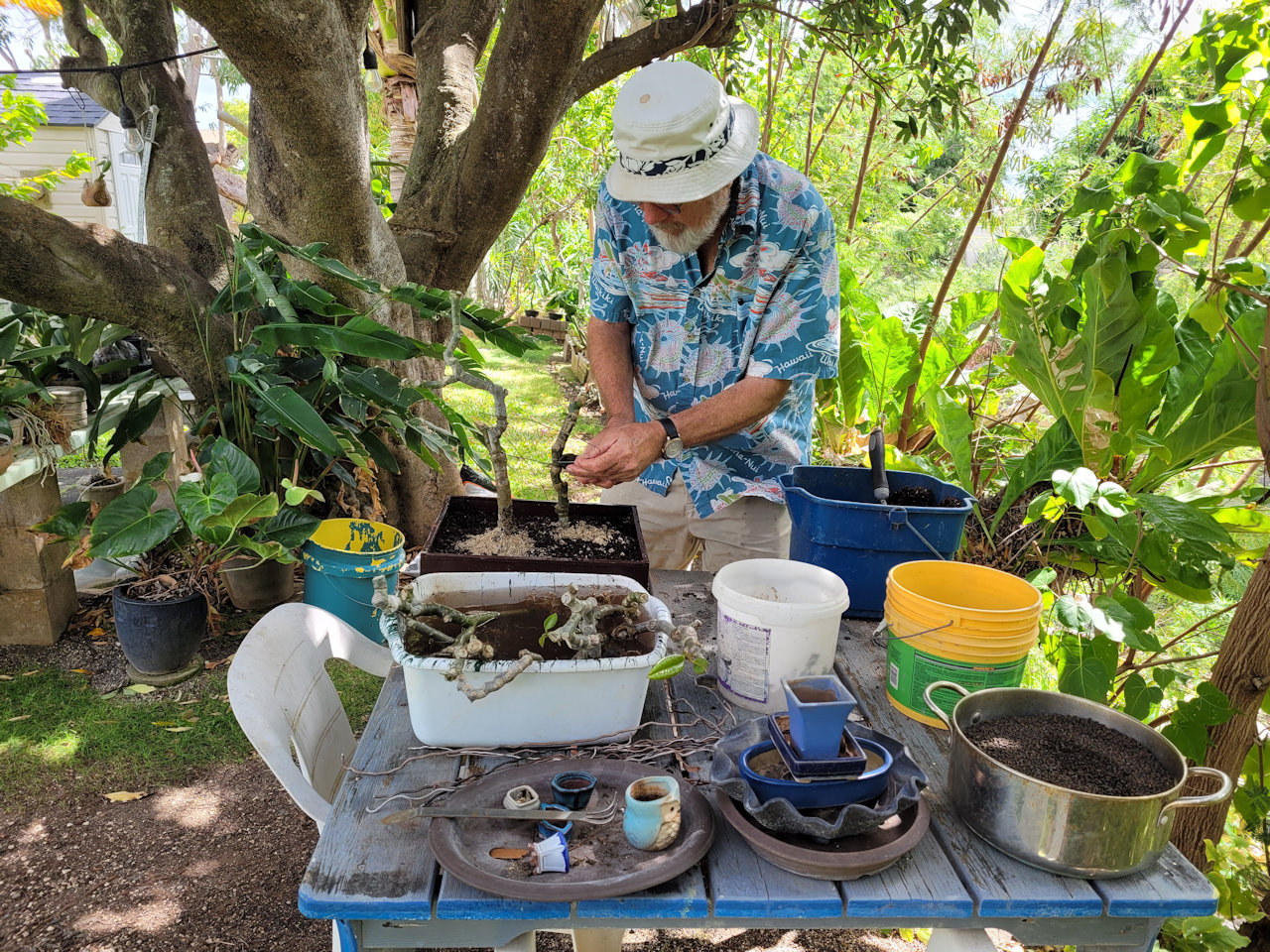
Then I placed the second largest tree and tied them together with a single piece of bonsai wire. This helps to stabilize them against the wind
as I add the other trees.
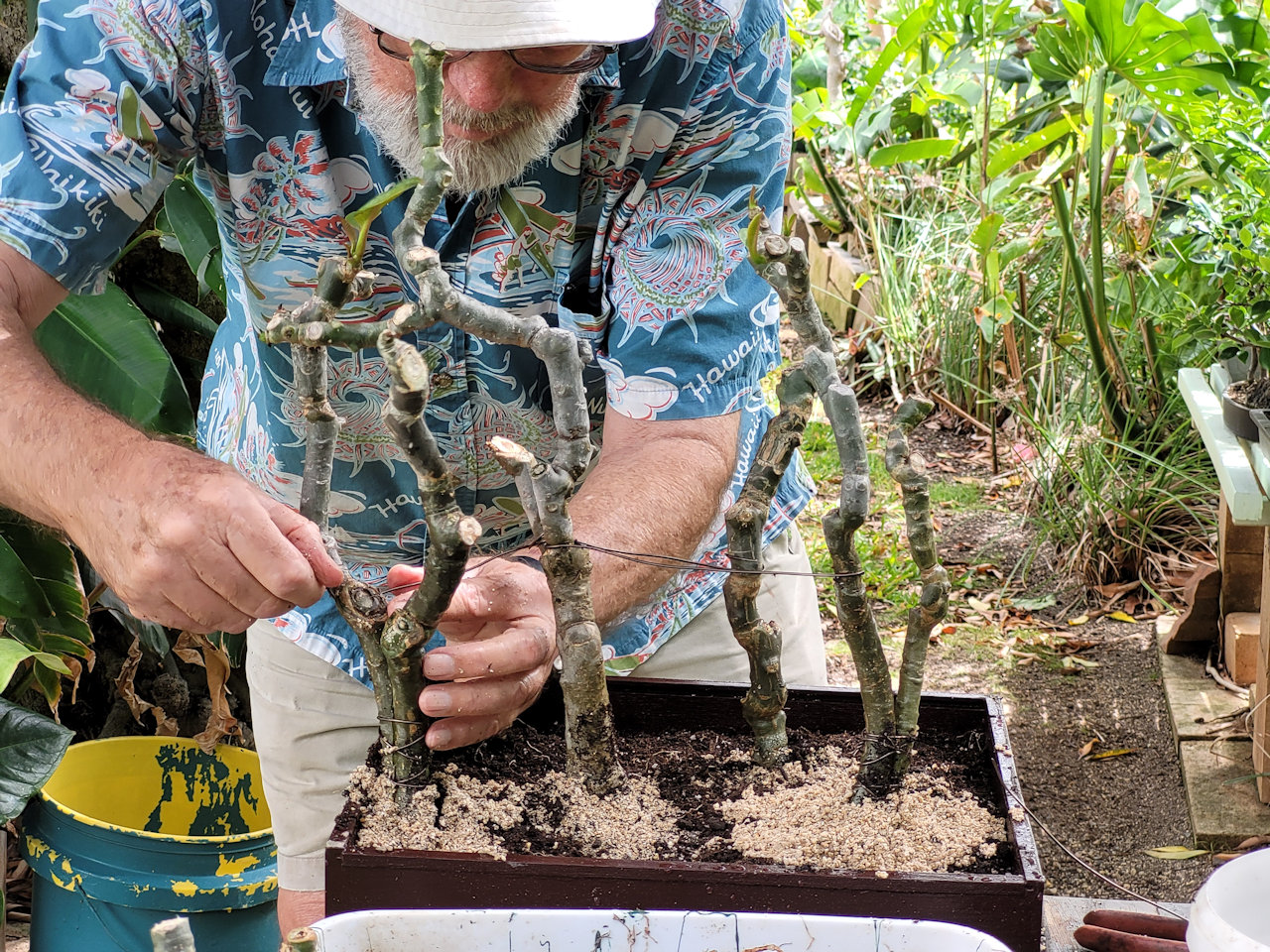
Next I placed the two pairs of bound trees, and also use wet sand to hold them and tie them with wire to the first two trees.
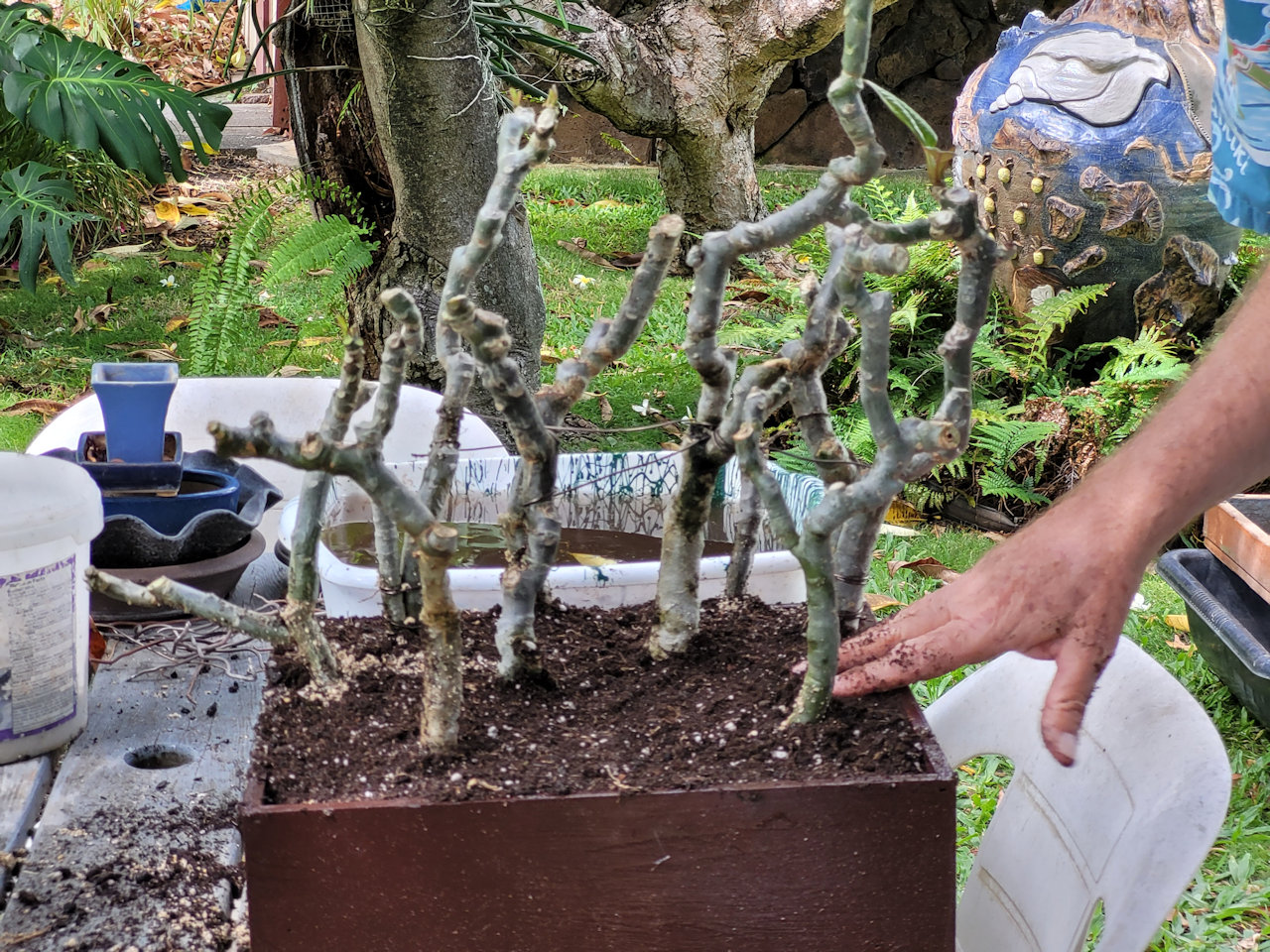
The remaining trees are placed somewhat randomly so that we don't have any three in a line, and then I fill the box with potting soil, pressing
it down with my fingers.

Finally, I cover the soil with a layer of black cinders to help protect against soil erosion when watering.
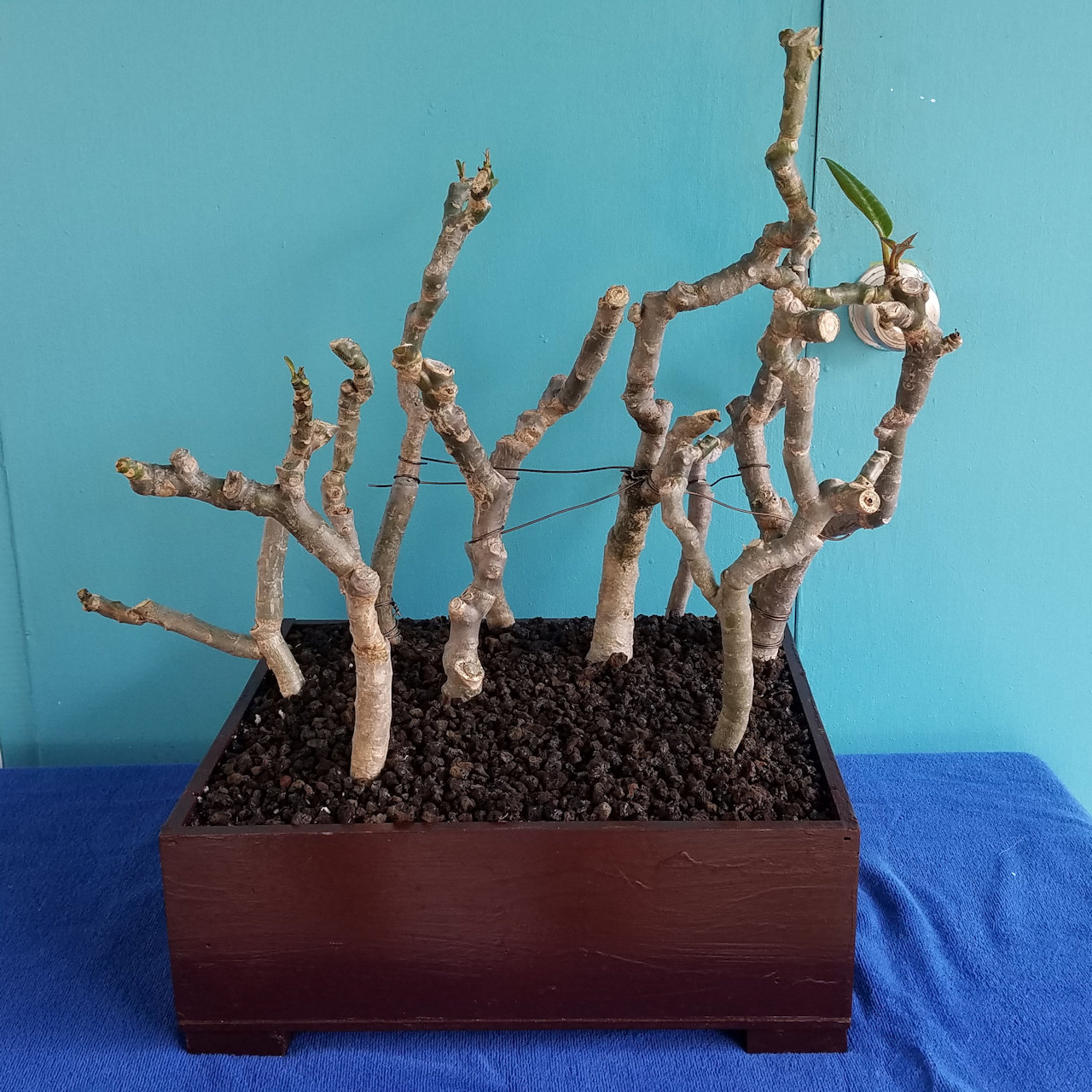
After watering and resting a while. The forest can grow for a year or two before putting it into a shallow forest tray.
 Email Richard dot J dot Wagner at gmail dot com
Email Richard dot J dot Wagner at gmail dot com